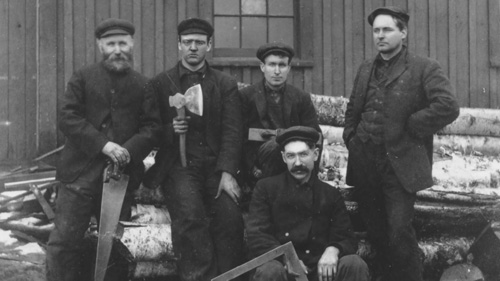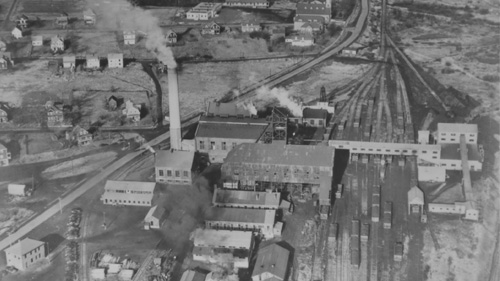
Why there is a museum of industry in Nova Scotia
Nova Scotia once possessed extensive and rich coal seams in its northern section and on Cape Breton Island. This provided the opportunity to develop manufacturing industries that depended on coal for fuel (using steam power) or coal as an ingredient (iron and steel). Being almost entirely surrounded by water and having substantial forests also encouraged shipbuilding. Although Nova Scotia never achieved the potential these raw materials promised, industrialization was a major force shaping immigration, settlement, the economy, and the life experience of many of its inhabitants. A provincial museum dedicated to this heritage increases our understanding of Nova Scotia’s past, and how these developments influence its present and future.

How it started
The Pictou County area of northeastern Nova Scotia has a significant industrial past. It includes mining of some of the richest coal deposits in the world, establishing the steel industry in Canada, an impressive history of wooden and later steel shipbuilding, and an array of manufacturing enterprises associated with steel, ships, and railroads.
In the 1970s some Pictou County businessmen noticed that the machinery and effects of these industrial activities and the railway were disappearing. They approached the Board of Governors of the Nova Scotia Museum to request a museum be built dedicated to Nova Scotia’s industrial and transportation heritage. Studies were undertaken supporting the creation of this museum, land was donated in Pictou County (Stellarton) adjacent to the Trans-Canada Highway, and artifacts (including four locomotives) were offered. The Board of Governors and the Province of Nova Scotia decided to proceed with the creation of the museum.
“Its [the Museum of Industry’s] creation in 1986 was formal recognition of industrialization’s significant role in shaping Nova Scotia’s character and economy.” [Industry and Society: 11]
| Dates | Events |
| 1974 | Pictou County group presents Proposal to Study the Establishment of a Museum of Transportation and Technology in Nova Scotia to the Board of Governors of the Nova Scotia Museum |
| 1975 | Motion of the Board of Governors of the Nova Scotia Museum to pursue the idea |
| c. 1976 | Study for a Museum of Transportation and Industry commissioned by Nova Scotia Museum Board of Governors to explore feasibility of museum and to identify potential artifacts to collect |
| 1975 - 1982 | Progress delayed by the Nova Scotia Museum focus on the development of the Maritime Museum of the Atlantic (Halifax) |
| 1983 | Nova Scotia Museum Board of Governors places the Museum of Industry and Transportation at the top of its list of priorities for development |
| 1984 | A study commissioned to review the feasibility of the proposal and to update costs (from the 1975 study). This resulted in the master plan: Barry Lord and Gail Dexter Lord, Nova Scotia’s Museum of Industry. A Plan for Implementation, (1984) |
| 1986 | Curator hired to begin to build the collection and gather knowledge of Nova Scotia’s industrial heritage |
| May 1988 | Sod-turning |
| 1988 | Ruins of Cornish pumphouse associated with the Foord mine moved to Museum site to prevent demolition during twinning of nearby Trans-Canada Highway 104 |
| 1990 | Museum building (80,000 ft²) designed by Halifax architects Fowler, Bauld and Mitchell completed; staff and artifacts move in |
| 1991 | Via Rail sells to the Museum its recently-erected Stellarton railway station (on the Museum site) when it discontinues its passenger service between Truro and Sydney |
| 1993 | Toronto firm Sears & Russell hired to work with Museum staff to design the permanent exhibition |
| 1994 | Province of Nova Scotia turns over management of the Museum to the Friends of the Museum of Industry Society as a locally-managed site of the Nova Scotia Museum |
| June 14,1995 | The Museum of Industry opens to the public with a gala event |
| 1996 | Province of Nova Scotia resumes direct operation of the Museum |
| 1998 | The second of two permanent exhibit galleries is completed, telling the story of industrialization from 1925 to the present |
| 2010 | Museum celebrates its 15th anniversary of being open to the public |